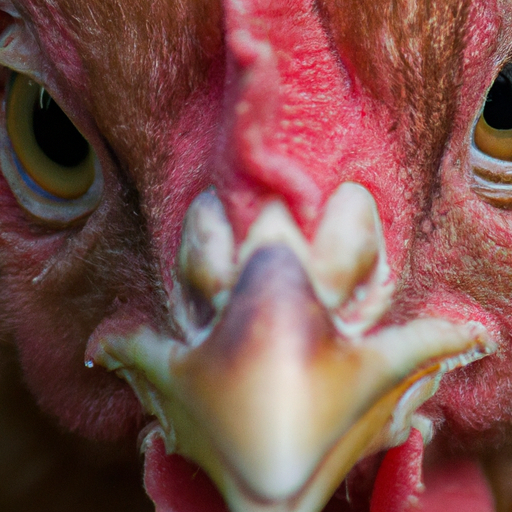If you’re a chicken owner, it’s important to know how to identify respiratory issues in your flock and understand what could be causing them. Respiratory problems can lead to serious health complications if not addressed promptly. By being able to recognize the signs and symptoms of respiratory issues in chickens, you can take the necessary steps to provide them with the care they need. In this article, we will explore common respiratory problems in chickens and their potential causes, equipping you with the knowledge to keep your feathered friends healthy and happy.
Common signs of respiratory issues in chickens
Respiratory issues in chickens can be concerning and may require prompt attention. Being able to identify the common signs is crucial in ensuring the health and well-being of your flock. Here are some key symptoms to watch out for:
Difficulty breathing
One of the most evident signs of respiratory issues in chickens is difficulty breathing. You may notice your chicken panting excessively or struggling to catch their breath. This can be accompanied by open-mouth breathing or gasping for air.
Coughing and sneezing
Similar to humans, chickens may also experience coughing and sneezing when they have respiratory issues. If you observe frequent coughing or sneezing among your flock, it is important to investigate further.
Wheezing or rattling sounds
Abnormal sounds such as wheezing or rattling during breathing can indicate respiratory problems. Listen closely when your chickens are breathing to detect any unusual noises that might suggest an issue.
Nasal discharge
Another sign to be aware of is the presence of nasal discharge. If you notice excessive mucus or discharge coming from your chicken’s nostrils, it could indicate a respiratory infection or irritation.
Swollen sinus
Inspecting your chicken’s face for any swelling around the sinuses is another way to identify respiratory issues. Swollen sinuses can be a sign of various underlying problems that warrant attention.
Decreased egg production
Respiratory issues can also impact your chicken’s reproductive abilities. A decrease in egg production or the presence of abnormal eggs, such as soft-shell eggs or misshapen eggs, may be indicative of respiratory problems.
Reduced appetite and weight loss
When chickens are unwell, they may show a decreased appetite and experience weight loss. If you notice your chickens avoiding their feed or exhibiting sudden weight loss, respiratory issues could be a contributing factor.
Depression and lethargy
Respiratory issues can make chickens feel unwell and lethargic. If your usually active and energetic chickens appear depressed, sleepy, or lack interest in their usual activities, it could be a sign of respiratory distress.
Discoloration of comb and wattles
Examining the color of your chicken’s comb and wattles is another way to assess their respiratory health. Respiratory problems can cause a bluish or purple tint to these normally red and vibrant areas.
Open-mouth breathing
One of the more severe signs of respiratory issues is open-mouth breathing. If your chicken is consistently breathing with their beak open, it indicates a major respiratory problem that requires immediate veterinary attention.
Causes of respiratory issues in chickens
Respiratory issues in chickens can stem from various factors, including infectious diseases, environmental factors, nutritional deficiencies, parasites, and more. Understanding the possible causes can aid in prevention and early intervention. Let’s delve into the different causes:
Infectious diseases
Numerous infectious diseases can lead to respiratory issues in chickens. Some notable examples include avian influenza, Newcastle disease, infectious bronchitis, Mycoplasma gallisepticum, and infectious coryza. These diseases often cause severe respiratory symptoms and may spread rapidly among flocks.
Environmental factors
Environmental conditions can significantly impact chicken respiratory health. Dust and particulate matter, ammonia exposure (often found in poorly ventilated chicken coops), high humidity, temperature extremes, and poor air quality can all contribute to respiratory issues in chickens. Ensuring a clean and well-ventilated environment is crucial in preventing such problems.
Nutritional deficiencies
Inadequate nutrition can weaken a chicken’s immune system, making them more susceptible to respiratory issues. Vitamin A deficiency and vitamin D deficiency are specifically linked to respiratory problems in chickens. A well-balanced diet with proper supplementation is essential for optimal respiratory health.
Parasites and mites
Parasites and mites can invade a chicken’s respiratory system, leading to respiratory distress. Gapeworms, a type of parasite, can obstruct the trachea and cause serious breathing difficulties. Mites and lice can also infest the respiratory system, causing irritation and inflammation.
Bacterial infections
Bacterial infections are a common cause of respiratory issues in chickens. Fowl cholera, E.coli infections, Mycoplasma synoviae, and pasteurellosis are bacterial pathogens known to affect the respiratory system. Prompt diagnosis and appropriate treatment are necessary to prevent further complications.
Viral infections
Viral infections can have a detrimental impact on chicken respiratory health. Avian infectious bronchitis, avian influenza, and Marek’s disease are viral infections that commonly affect chickens. These viruses can cause severe respiratory symptoms and lead to significant economic losses in the poultry industry.
Fungal infections
Fungal infections, although less common, can still affect chicken respiration. Aspergillosis and candidiasis are two fungal diseases that can impact the respiratory system. These infections often occur in environments with poor sanitation or high levels of humidity.
Allergies and irritants
Just like humans, chickens can also experience allergic reactions or sensitivities to certain substances, such as dust, mold, or certain types of feed. These allergens and irritants can trigger respiratory distress and should be avoided or minimized.
Chronic respiratory diseases
Chickens can develop chronic respiratory diseases that persist over time. Chronic respiratory disease (CRD) and Mycoplasma gallisepticum (MG) infection are examples of such diseases. These conditions often result in long-term respiratory issues and may require targeted management strategies for affected flocks.
Poor ventilation
Insufficient ventilation in chicken coops can have detrimental effects on respiratory health. Stagnant air, buildup of ammonia, and inadequate air exchange can create an environment conducive to respiratory issues. Proper ventilation is crucial in maintaining good air quality and preventing respiratory problems.
By familiarizing yourself with the common signs and causes of respiratory issues in chickens, you can take proactive steps to maintain the health and well-being of your flock. Remember, early detection and appropriate intervention are key to minimizing the impact of respiratory problems on your beloved chickens.




